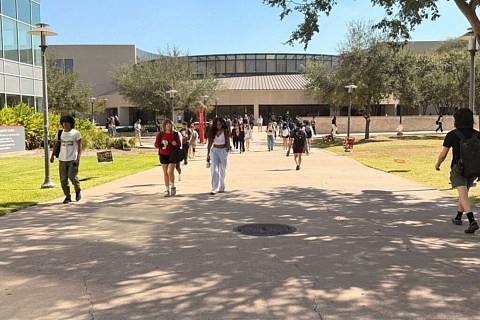For real-life Mario Kart with more action, Formula One is an exhilarating sport with never a dull moment, but it can get overwhelming when first following the sport.
This week marks the first week back racing, starting with reigning world champion Max Verstappen’s home race in the Netherlands, so here’s what’s important to know going into race week.
The Teams
Between 10 teams, 20 drivers complete the F1 lineup, also referred to as the grid. The teams typically see changes each season, but this year’s teams are Red Bull Racing, McLaren, Ferrari, Mercedes, Aston Martin, RB, Haas, Alpine, Williams and Kick Sauber.
The grid, in order of their championship standings, is as follows: Verstappen, Lando Norris, Charles Leclerc, Oscar Piastri, Carlos Sainz, Lewis Hamilton, Sergio Perez, George Russell, Fernando Alonso, Lance Stroll, Nico Hulkenberg, Yuki Tsunoda, Daniel Ricciardo, Pierre Gasly, Kevin Magnussen, Estaban Ocon, Alexander Albon, Zhou Guanyu, Logan Sargeant and Valtteri Bottas.
While not on the grid for the 2024 season, 19-year-old Oliver Bearman drove in place of Sainz when he had surgery, and ranks 14 after finishing seventh with Ferrari in Saudi Arabia. Bearman has signed with Haas for the 2025 season and will be paired with Ocon.
Race Week
Races, professionally referred to as grand prix, typically occur every other Sunday, but this year’s schedule sees many double and triple headers, meaning many of the races happen back to back.
Before the main event, drivers have three free practices and a qualifying race, the latter of which determines the starting grid for the upcoming grand prix. While the practices are a good chance for teams to test the car and the circuit, they don’t have any impact on the race.
Qualifying sessions, however, determine where the drivers start on race day and while this gives initial advantages and disadvantages, between overtakes, pit stops and other unknown outcomes, race days are always full of surprises.
During a typical race week, practices occur on Friday and Saturday, with qualifying also on Saturday, but there are sometimes exceptions so be sure to check the official schedule for correct days and times.
Championships and Points
The top 10 drivers at the end of each grand prix receive points, with first place, also referred to as P1, awarded 25 points, all the way to P10 with one point.
As the season continues and drivers rack up points, they fight for the World Drivers’ Championship, which essentially determines the most successful driver of the season. Verstappen has won this title since 2021, but Hamilton is tied with retired driver Michael Schumacher for a record seven title wins.
The drivers wouldn’t be able to get far without their cars, engineers and entire team, so they also fight for the World Constructors’ Championship, which is determined by the constructor with the most points by the end of the season. Unlike the WDC, which is focused on individual drivers, both drivers for each team earn points for their respective constructors.
Where to Watch
F1 has its own streaming service, F1 TV, which has two subscription options: F1 TV Pro for $10.99 a month or $84.99 a year, with live races, timing, onboard cameras and more, or F1 TV Access for $3.49 a month or $24.99 a year, but only access to live timing and radio commentary, not the race itself.
ESPN and ESPN+ also stream F1, but a subscription is needed. The races are infrequently shown on ABC, with the closest one being streamed in October. ESPN’s schedule denotes which 2024 races will also be shown on ABC.
YouTube streamers show the timing and provide their own commentary so while unable to view the actual race, this is a free option for real-time race updates.
With a Netflix subscription, all six seasons of “Formula 1: Drive to Survive” are available, which starts with the 2018 season and showcases races, drivers and major events happening at that time.
Staying in Touch
F1 also has its own YouTube channel, which posts race highlights, driver’s reactions, rankings, interviews and more. This is a great introduction into the driver’s personalities and friendships, and aspects of the sport outside of race week.
F1, the teams and drivers also have their own social media accounts, so following them helps when staying updated on any changes or important events, plus seeing what drivers are up to off the track.




Recent Comments